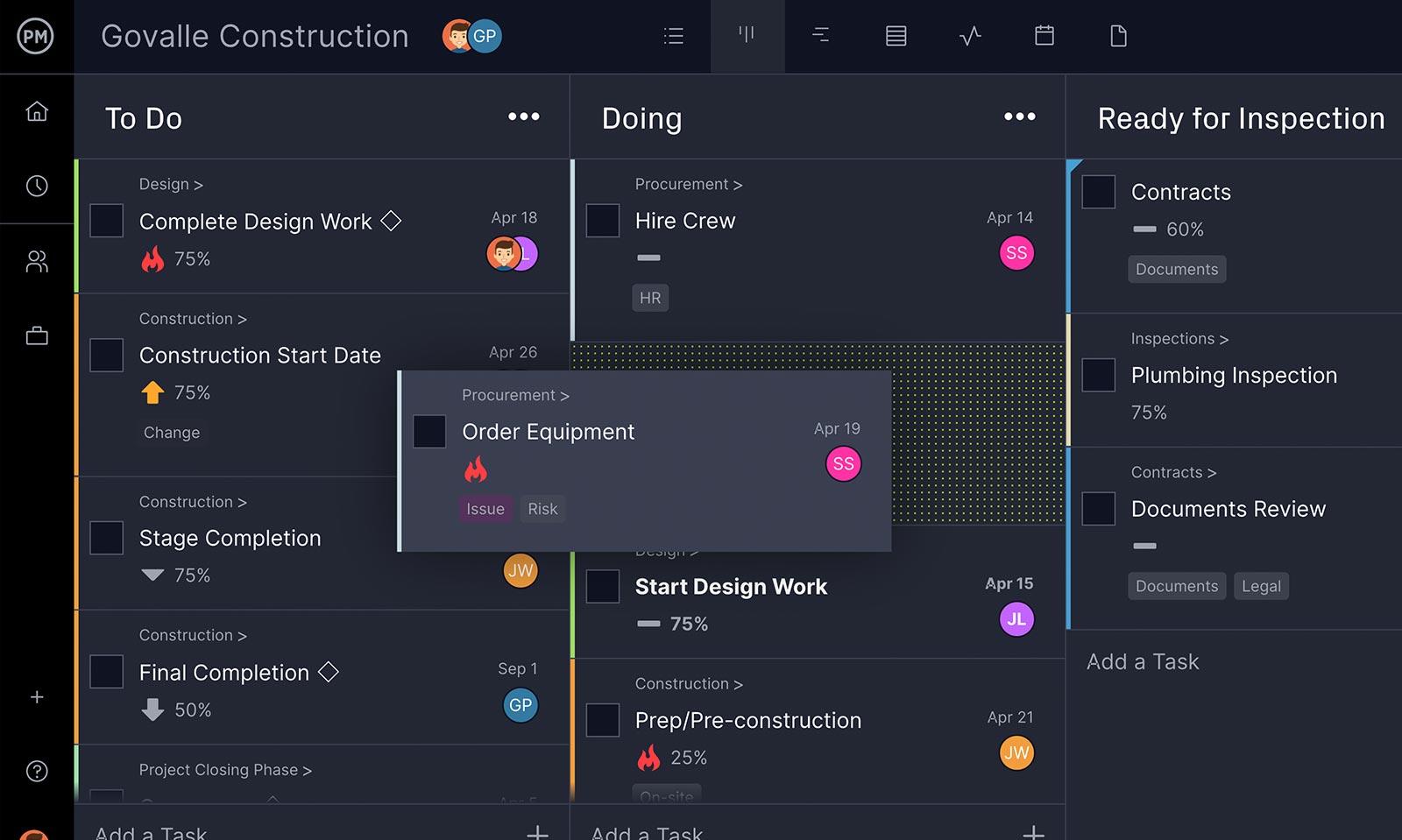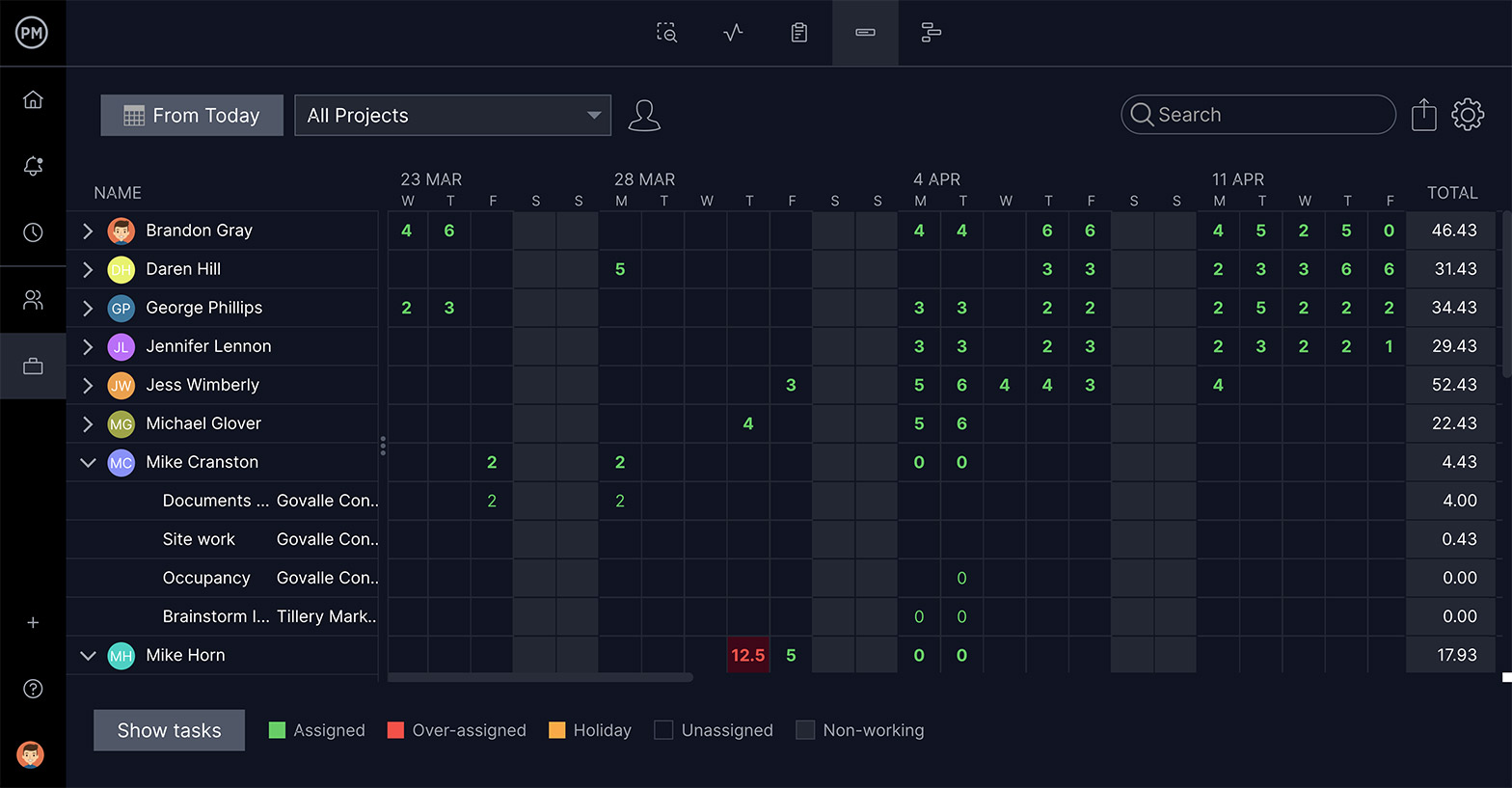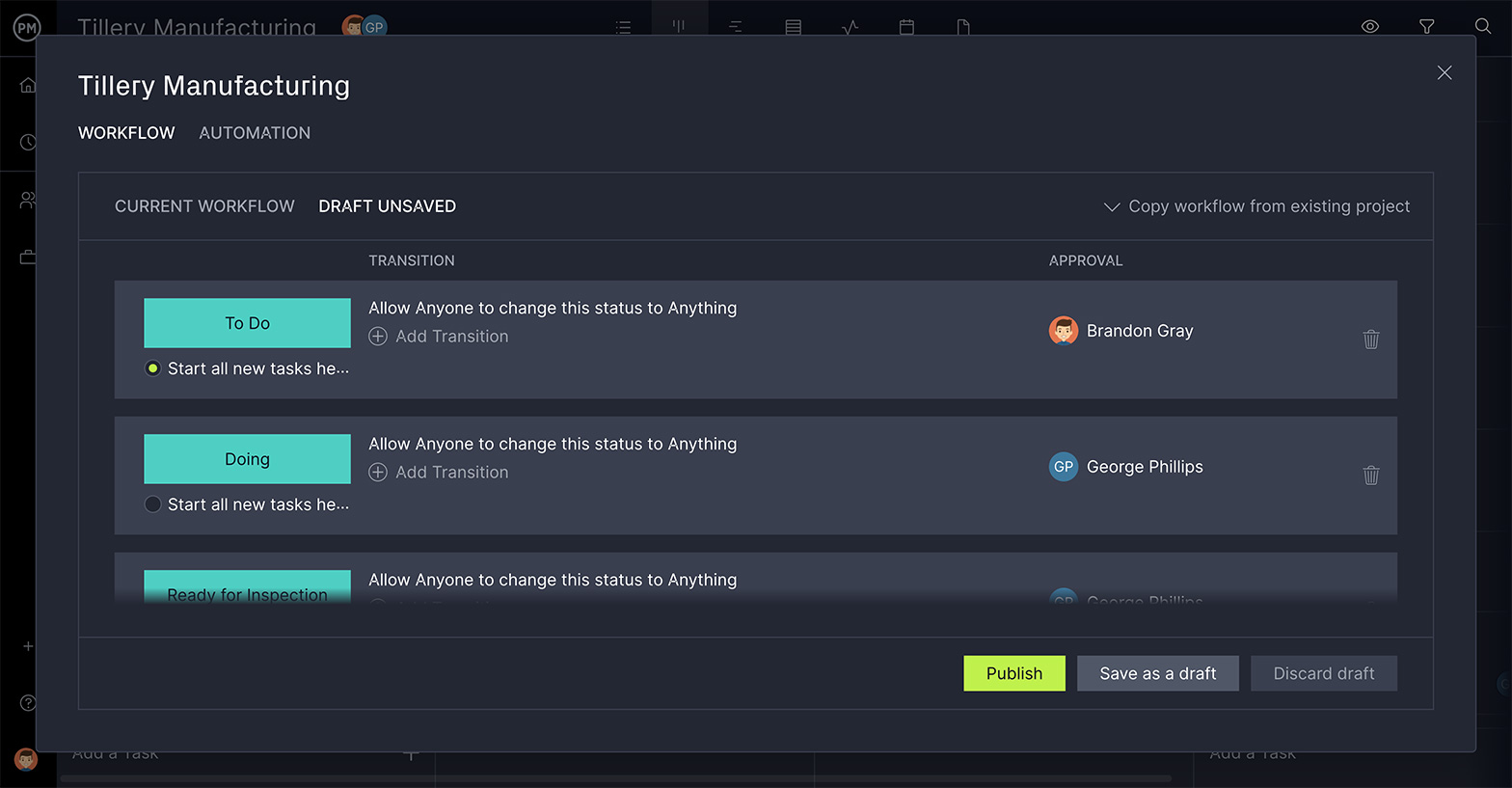No business process is perfect from the start. Reaching perfection in business process management requires honest analysis followed by tweaks and improvements.
Process optimization methods can help guide those tweaks and improvements. With process optimization, the ultimate goal is to help you be more efficient by adjusting certain aspects of your project or business—whether it be operating procedures, equipment and resources management or a control loop—to name a few.
But before we define process optimization, let’s start by defining a business process.
What Is a Business Process?
A business process is a set of tasks that are executed to deliver a product or service, or simply achieve a business goal. There are three types of business processes: management processes, operational processes and supporting processes.
You can visualize your business processes using mapping tools such as a flowchart or a Gantt chart. This will show you the sequence of tasks, the critical path, how they connect and their dependencies.
Gantt charts are an essential tool for any well-oiled machine, and without one, you could be missing visibility into key processes. With ProjectManager, work and project management software, you get access to our online Gantt chart so you can plan your optimized processes ahead of time, collaborate with employees, stakeholders, and investors and make adjustments as needed—all in real time. Get started today for free.

What Is Process Optimization?
Process optimization is the concept of optimizing a process as we outlined above. It’s a critical element of business process management along with process mapping and process modeling.
The goal of business process optimization is to reduce risks, streamline daily operations, improve worker output, increase efficiency, utilize resources more effectively and improve quality assurance.
It’s also important to understand how each business process interacts with one another in an organization to break down the barriers between silos and increase process collaboration. Once these details are considered, only then can you make fully informed project decisions.
Process Optimization Examples
Let’s go through some process optimization examples from different industries to better understand how business process optimization can help your business or project.
Process Optimization in Manufacturing
In a consumer-facing fabric shop, for example, you have workers that are sorting, folding, packing and measuring different yards of fabric. But if these workers have glaring inefficiencies in their process, then the rest of your facility can fall off course. By optimizing the sorting, folding and packing process, you can improve the business as a whole.
Process Optimization in Business Administration
Business administration is often made up of repetitive tasks. You can optimize these with process mapping, a systematic way of documenting the steps and time necessary to complete those administrative tasks. Process automation is a way to streamline that system and remove the human inputs to decrease errors, add speed and quality and reduce costs.
Process Optimization in Project Management
Project management can be streamlined through process automation. Business processes can be automated or customized to increase efficiency and reduce human error. Six Sigma is often used in project management as a means of improving processes. All this can free up your team to devote their attention to more important work.
Process Optimization Methods
There are several methods that can be applied to your work in order to optimize the process by streamlining the work, which in turn leads to fewer errors and savings in both time and cost. Some of those methods are listed below.
Six Sigma
Introduced by Bill Smith, an engineer working at Motorola, Six Sigma is a process to reduce defects when producing a feature or part. It is used in manufacturing to increase quality by identifying and removing those issues that cause defects. This is accomplished with quality management.
Kaizen
This Japanese term is roughly translated as meaning change for the better or continuous improvement. It, therefore, looks at ways to continuously improve processes while involving everyone in the organization. It does this by making the work environment more efficient, creating a team atmosphere, improving procedures, engaging employees and making the job more fulfilling. This concept of continuous improvement is key to lean manufacturing.
Value Stream Mapping
Value stream mapping is a lean tool that uses a flowchart to document every step in a process. It helps identify waste in the process and removes that waste to improve cycle times and the overall process. This is done by combining material processing steps with information flow and related data.
DMAIC
DMAIC stands for define, measure, analyze, improve and control. It’s a data-driven quality strategy that helps to improve processes. The five letters reflect the five phases that make up the process. DMAIC is part of a Six Sigma initiative but can be used as a standalone quality improvement tool.
SIPOC
Another acronym, SIPOC stands for suppliers, inputs, processes, outputs and customers. It’s used to summarize the inputs and outputs in processes by creating a table with SIPOC as columns. Six Sigma, lean manufacturing and business process management all use it to help with process improvement.
How to Optimize Business Processes
The best way to roll out your new process, track its success and tweak it is to follow the steps below. You can reveal which processes are bottlenecks in the project’s output and which ones are working seamlessly.
1. Research and Identify
Research and identify which of your processes are lacking. This can be done by interviewing staff members, workers, and leadership, as well as reading through records of the latest customer inquiries. Furthermore, collect and analyze data related to your processes. This can be as simple as tracking how long it takes for a worker to complete a task.
2. Map Out Your Processes
As we previously mentioned, this can be done by a flow chart or by a Gantt chart. Which resources might help to fill any gap needed? Which workers might help streamline the process better? By mapping this out, you can see where the holes lie within each process.
3. Reassemble Your Process
For ‘before-and-after’ presentation purposes, make a copy of your current chart and reorganize it based on which points would help improve the process if they were located at different points of each process. This should include any additional resources added as well as any new dependencies.
4. Execute & Report
Kick off your newly minted process and record every piece of the process that’s improved or worsened after the intervention. Does it match your predictions or go against them? This is where you’ll find that out. Record and report every detail here to key stakeholders so you can make additional adjustments based on their feedback.
5. Automate & Document
No process works best when it’s constantly being tweaked and revised. So now that you have your new process in place, and it’s functioning at optimal levels, let it run its course and see how much worker output has improved. Document all of your findings and store them in a repository that you can easily share with key stakeholders and refer back to at future dates.
Related: What Is Stakeholder Management?
Challenges of Business Process Optimization
The key to effective process optimization is to make all of your decisions based on research and data. Be wary of changing things just to change them. Upsetting a process can have far-ranging consequences on your project or business, so be sure to map out any possible negative effects that can stem from your changes.
Additionally, as you’re interviewing team members and stakeholders, you may get a lot of suggestions—too many, most likely. Be sure to set parameters on who gets to make decisions on what and recognize subject matter experts versus those with an opinion. Every stakeholder’s opinion has some value, but you need to learn to prioritize that feedback and synthesize it into an effective action plan. Remember, you can’t please everyone all of the time.

Free Templates to Help with Process Optimization
Process optimization is essential to keep costs down and boost productivity. It’s usually fostered by using business process management software, but if you’re not ready to take that step, there are free templates that can help. ProjectManager has dozens of free templates for every phase of your project. Here are are few that are for process optimization.
Root Cause Analysis Template (Fishbone Diagram)
The free root cause analysis template for Word can be used to identify what issues are causing your process to not work out as planned. This is usually part of your larger quality management plan. The fishbone diagram shows the cause and effect, which helps you improve processes by finding what’s not working.
Gap Analysis Template
One way to optimize processes is by looking at where you are, and where you want to be and devising a plan to bridge that gap. The free gap analysis template for Excel is built for this purpose. It does this by capturing your current state and allowing you to define the future state you wish to reach. You can then figure out the gap percentage and the actions to close that gap.
Project Task Tracker Template
Once you have a plan in place for process optimization, you need to implement it and ensure you’re meeting those goals. The free project task tracker template for Excel helps you do that. It has a place for you to list all your tasks, any dependent tasks, who they’re assigned to, what the priority is, start date, planned end date and actual end date. You can even note its status to help you stay on schedule.
ProjectManager Can Help with Process Optimization
Optimizing a process is no easy feat—no matter if it’s a team of 10 people or 10,000. ProjectManager is work and project management software that can help you with process optimization. You can make your plan and use our multiple project views to allow your team to execute that plan how they want.
Use Kanban Boards to Visualize Workflow
One project view is the kanban board, which you can use to visualize workflow so you can maximize efficiency. The customizable columns on the kanban board display exactly where a task is in your process. Noticing that one column has too many tasks? You might want to start there with your business optimization.

Balance Your Team’s Workload
You can’t optimize processes if your team is overextended or not working at capacity. We have resource management features that monitor your team’s workload and show the results in a color-coded graph. Quickly see who is overallocated or under-allocated and reallocate tasks as necessary to keep morale and productivity high.

Automate Processes For Greater Quality
When you automate processes you eliminate human error. Our custom workflows allow you to create triggers that set off actions, such as changing the priority, tag, assignee and more. That also keeps teams focused on what matters. Meanwhile, you can set up task approvals so you control the quality of what’s considered “done.”

By monitoring your processes, you can see where things aren’t working and where there’s room for improvement. Our real-time dashboards automatically collect live data and display it in colorful graphs that track six project metrics. One-click reports go even deeper and can be filtered and shared with stakeholders to show the process optimization.
No business process is optimized without a little help, whether it’s input from stakeholders or online tools to get your charts organized. Assure your stakeholders that your new processes will give them the competitive edge they need. ProjectManager is an award-winning PM software dedicated to helping businesses optimize their processes and report on them. Get started for free.


